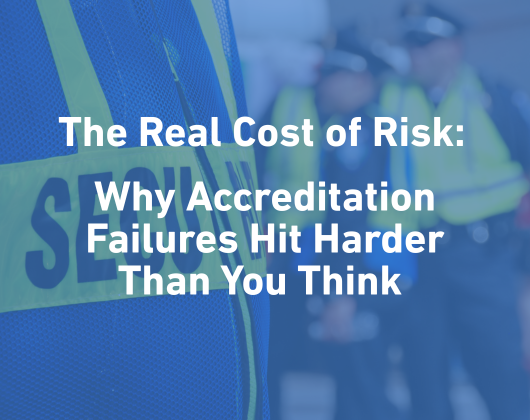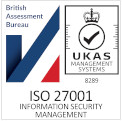The Protect Duty is reshaping how stadiums, events and festivals look at and approach the terrorist threat. To date, Chris Phillips and Accredit have focused on how it could affect larger-scale stadiums, festivals and endurance events in our previous whitepapers (which you can view here). Chris kicks off this 3-part Blog series answering the question:
“Do you think that smaller stadiums and venues with lower capacities will be included in the Protect Duty?”
Of course, nothing is confirmed yet but, in my opinion, Yes, they will.
Sports and Event organising bodies should already be updating their members on the likely changes.
This will bring all sorts of sports and events into play. Hockey, Swimming, Tennis, Basketball, Cricket (to name a few sports), Concerts, Conferences and Exhibitions. Many tournaments, Event Organisers and Venue owners across the UK should be paying attention to the new requirements when they finally become law.
Included in this will be many amateur clubs and venues that up until now have probably thought themselves immune to the terrorist threat and by implication the planning and preparation. Truth is Police have always thought that the most likely targets would be iconic sites. The Wembley’s and Old Trafford’s of this world are of course prime targets but let us not lose sight of the fact that smaller venues are also attractive to a terrorist.
The fact is that the iconic stadiums (and I have worked at a few of them), have more money to spend and more resources to play with. Most are fully engaged in safety. Security varies greatly but in the main, there are at least, (because of the Hillsborough stadium disaster) good working relationships between the police and security companies charged with securing their grounds. You would expect these large stadiums to be aware of upcoming changes to legislation especially the implications of the proposed Protect Duty. But can the same be said for the lesser-known sports, semi-professional clubs and local venues? Do they understand the possible changes and the implications?
To try to help these companies I’ve put together my thoughts on the subject and share them in this blog series. The blogs cover some of the important requirements and I hope they will be useful to get you thinking. I consider the following key points:
- All Sports and Event organising bodies, all stadiums, arenas and venues of any kind that become Publicly Accessible Locations should understand the implications of the Protect Duty
- They should consider terrorism in their safety and security training and planning
- If they haven’t started already then, they need to get cracking and take action now to protect staff and customers from terrorist attacks.
Background
It’s brilliant that customers are attending sports and events and venues are back working at full capacity. Venues with big crowds are thankfully now back for good but unfortunately, the security risks have not disappeared. Experience tells us that terrorists attack locations they know and as they seek to kill people, a Venue with 500 fans provides an inviting target.
On the terrorism threat front, the actions of our military, police and security services have prevented successful large-scale attacks by Al Qaeda-inspired terrorists. However, since 2017, the United Kingdom has suffered a number of low-sophistication terror attacks in crowded places and public areas. Incredibly some of these attacks have been committed by unreformed, convicted terrorists who had recently been released from prison. The devastating atrocities on London Bridge (Borough Market) and the Manchester Arena showed that ISIS-inspired terrorists are still capable of mounting high casualty attacks in crowded public places.
Crowded places will continue to be attacked
Legislation is on the way for all in the UK. The Protect Duty is coming. Legislation aimed directly at those responsible for Publicly Accessible Locations formally known as Crowded places.
Tougher security measures will be required to ensure preparedness and protection from terrorist attacks. It looks, at this stage, that the Duty will apply to venues with a threshold of 100 persons or more. This brings the smaller events and venues right into the fold.
Of course, there are many reasonable and appropriate measures that are already undertaken by organisations. But are you doing regular risk assessments and security response planning specifically for countering terrorism?
For many of you, taking action may require only small and simple changes to existing systems and processes, which won’t mean big costs. This can include ensuring that staff undergo the free counter-terrorism training supplied by the police.
However, for some of you, a legislative change could have a significant impact. So here are a few key points for you to consider.
Who does the Protect Duty apply to?
It must be stressed that this Act is not yet enacted so could change but currently, a Publicly Accessible Location (PAL) is defined as any place to which the public or any section of the public has access, on payment or otherwise, as of right or by virtue of express or implied permission.
What is expected of those responsible for a PAL in the Act?
- Engagement with freely available counter-terrorism advice and training
- Carrying out Vulnerability Assessments on their operating places and spaces
- Ensure that a mitigation plan for the risks created by the vulnerabilities is in place
- Have a counter-terrorism plan in place which is communicated to all staff
- Local Authorities must have a planned response to a terrorism threat at your PAL
There’s no getting away from the fact that Protect Duty is here, and it’s here to help us protect everyone within a venue from a terrorist attack. We need to engage with it and ensure we are implementing it correctly.
Read the next blog in the series here, which looks at what practical steps you can take to ensure you have processes in place to mitigate against an attack, or if the worst should happen help work to minimise the impact of an attack.
To ensure you don’t miss out on this, and other useful Accredit blogs, make sure you sign up for our monthly newsletter.
Chris Phillips is a consultant, speaker and recognised Counter Terrorism and security expert.





![EAS-Accredit-300dpi[22]](https://www.accredit-solutions.com/wp-content/uploads/2024/01/EAS-Accredit-300dpi22-300x156.png)

